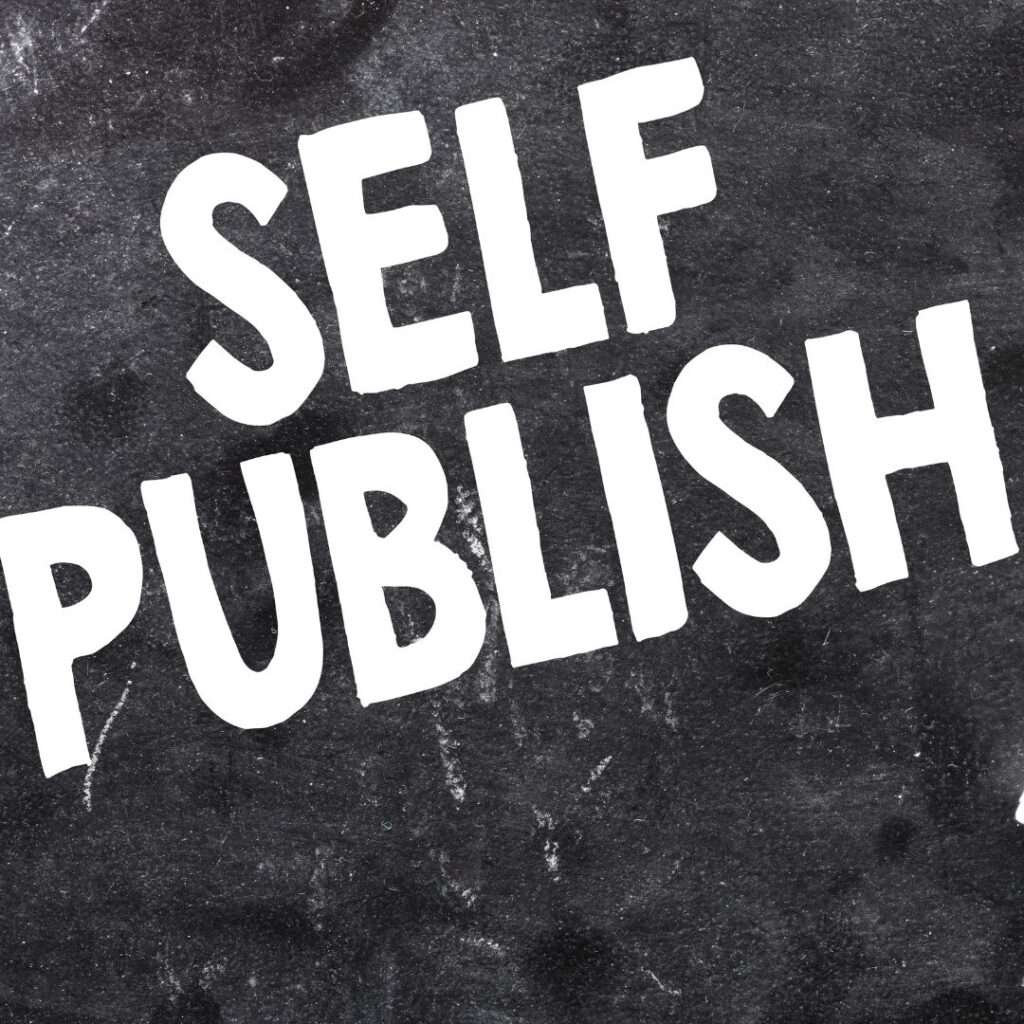Table of Contents
- Introduction to the Self-publishing Market
- Factors Driving the Self-publishing Market Growth
- The Future of Self-publishing
- Costs Involved in Self-publishing
- How to Successfully Self-publish a Book
- Jumping Into the Self-publishing Market
Introduction to the Self-publishing Market
The self-publishing market has been experiencing significant growth and transformation in recent years. As of 2023, the market for self-published books is substantial, with 300 million sold annually.
Financially, this translates to $1.25 billion worth of self-published books sold yearly. This robust market is further underscored by Amazon paying out $520 million in royalties to self-published authors annually.
Factors Driving the Self-publishing Market Growth
Several factors have been attributed to the growth of the self-publishing market. These include the rise of digital publishing, online marketing potential, higher royalty, and more control.
The Rise of Digital Publishing
One of the biggest drivers of Self-publishing is the advent of digital publishing and print-on-demand technology. Platforms like Amazon Kindle Direct Publishing (KDP) and IngramSpark allow authors to self-publish ebooks and paperbacks without upfront printing costs. This has lowered the barriers to entry significantly.
On market share, self-published authors have captured a notable portion of the ebook industry. According to data, self-published authors accounted for 51% of overall ebook unit sales in the previous year and more than 34% of ebook retail revenue. This significantly increased from 31% in 2021, indicating a growing preference for self-published content among ebook readers.
Online Marketing Potential
The Internet has also opened up new marketing possibilities for self-published authors. Platforms like BookBub, Goodreads, and social media sites allow authors to connect with readers and promote their books directly. Targeted online advertising makes it easier to find niche audiences. This somewhat levels the playing field between independent authors and major publishing houses regarding discoverability.
Higher Royalty Rates
Another appeal of self-publishing is its higher royalty rates. Traditional publishers typically offer 10%–15% royalties on each sale. Meanwhile, online book retailers like Amazon pay up to 70% royalties on ebook sales. This allows successful self-published authors to enjoy much higher per-book earnings.
Control and Flexibility
Finally, self-publishing offers writers greater control over their works and flexibility around release timelines. Authors maintain full creative license and ownership of their intellectual property while avoiding the lengthy process of finding an agent and selling to a traditional publisher. This has made self-publishing an increasingly popular first step for new authors.
With all these advantages, it’s no wonder the self-publishing industry is booming. As mainstream and independent publishing converge, we can expect the stellar growth to continue for years.
The Future of Self-publishing
The self-publishing industry is poised for continued growth and evolution in the coming years. The rise of digital publishing platforms, shifting reader preferences, and new technologies like AI are ushering in what some have termed “Self-Publishing 3.0.”
Introduction to Self-publishing 3.0
Self-Publishing 3.0 refers to the next phase of innovation and opportunity in the self-publishing space. Key features include:
- Increased use of artificial intelligence (AI) for writing assistance, marketing optimization, and streamlining publishing workflows
- Further growth of ebooks and audiobooks as preferred reading formats
- Emergence of multi-format publishing services that distribute to print, digital, and audio simultaneously
- Rise of online publishing platforms with built-in tools for editing, design, marketing, and distribution
These industry shifts greatly benefit authors by making high-quality self-publishing more manageable and more accessible than ever before.
Forecasted Industry Trends
Experts predict strong continued growth for self-publishing in the next few years:
- The US self-publishing market is expected to be worth $1.06 billion by 2023
- There could be as many as 7.95 million self-published titles available by 2025
- Nearly 20% of all printed books in the US could be self-published by 2025
The ongoing democratization of publishing drives this growth, allowing anyone to become an author. More traditionally published authors also embrace self-publishing to retain creative control and increase income potential.
Self-publishing as a Sustainable Career
Can self-publishing provide a viable career for authors? A small but growing number of breakout indie authors are proving it can.
Success stories like Mark Dawson, who earns over $450k annually from his self-published books, demonstrate that self-publishing can become a full-time career with hard work, business savvy, and persistence.
Key sustainability factors include prolific output, smart metadata and categorization, regular new releases, multi-format publishing, and effective marketing outreach. Platforms like Kindle Direct Publishing and IngramSpark make achieving this success more possible.
For the right type of author—one who enjoys having control and is willing to learn the business side—self-publishing may offer the best path to full-time authorship.
Costs Involved in Self-publishing
Self-publishing a book can be exciting yet daunting, especially when assessing the costs involved. When embarking on this journey, it’s crucial to have a clear understanding of the expenses you may incur so that you can budget appropriately.
Average Costs of Professional Services
The costs of self-publishing largely depend on the professional services you choose to utilize. On average, you can expect to spend:
- $800–$1500 on editing
- $300–$700 on book cover design
- $100–$300 on interior formatting and layout
- $100–$500 on ebook conversion and distribution set-up
Of course, costs vary widely based on the length and complexity of your book. The rates above would apply to a typical full-length manuscript of around 50,000–70,000 words.
Marketing and Promotional Expenses
Beyond the production costs, marketing and promotion requires a separate budget. Options to consider include:
- Paid advertising: $100 per month minimum
- Publicist services: $1,000–$3,000+ per campaign
- Book tour costs: travel, lodging, supplies
- Giveaways and reviewer copies: estimate $5-$10 per book
You may need to experiment with different marketing tactics before determining which provides the best return on investment. Be prepared to spend at least $500–$1000 launching your book.
Assistance from Self-publishing Companies
Using a self-publishing company can simplify the process, as they provide bundled services to indie authors. However, these businesses charge higher rates and may limit your control over the finished product. On the positive side, they handle technical tasks like printing, distribution, and royalties.

Common packages range from $1,000–$5,000 or more. Carefully weigh the tradeoffs when budgeting for your book. With some legwork, you can contract quality freelancers at competitive prices. But companies offer convenience if you prefer less hands-on work.
How to Successfully Self-publish a Book
The process of self-publishing a book has been made much easier in recent years thanks to advances in technology and online platforms. However, it still requires careful planning and strategic execution to do it effectively. Here is an overview of the critical steps:
Write and Edit Your Manuscript
The foundation of any good book is quality writing. Be sure to take the time to craft your manuscript carefully, get feedback from beta readers, and work with a professional editor to polish your content before moving forward. Focus on structure, flow, clarity, spelling, and grammar.
Design an Eye-catching Cover
They say you shouldn’t judge a book by its cover, but many readers do exactly that. Invest in a professionally designed cover that will grab attention and communicate the essence of your book. Consider elements like typography, imagery, and color scheme.
Choose a Self-publishing Platform
There are many options for self-publishing platforms, including Amazon Kindle Direct Publishing, IngramSpark, Lulu, BookBaby, and more. Research each thoroughly to determine the best fit for your book in terms of features, distribution channels, formats, and costs.
Format Your Manuscript
The platform you choose will have specific formatting requirements. You’ll need to convert your manuscript into a format like EPUB or print-ready PDFs. Some platforms offer formatting services or DIY software to help streamline the process.
Upload Your Files and Information
Once your files are correctly formatted, you can upload everything to the self-publishing platform. This includes your manuscript, cover, descriptive information, pricing, territories for distribution, etc. Double-check that all materials and data are accurate before publishing.
Market Your Book
Simply publishing your book is not enough. You need to promote it to drive sales actively. Leverage social media, your network, speaking engagements, and advertising platforms like Facebook and Amazon. Consider offering the eBook version for free or at a discount to stimulate interest. These key steps will set you on the path to successfully self-publishing your book! Don’t forget that it takes continued effort to actively market and sell your book over the long-term actively.
Jumping Into the Self-publishing Market
In conclusion, the self-publishing market offers many opportunities for authors ready to take control of their writing careers. With the growth of digital platforms, the proliferation of marketing tools, and the potential for higher royalties, the barriers to entry have never been lower. Self-publishing is not just an alternative to traditional publishing; for many, it represents the primary route to sharing their work with the world and achieving financial success.
As we look to the future, with the advent of Self-Publishing 3.0, we can anticipate further innovations that will streamline the publishing process and empower authors even more. The integration of AI, the expansion of multi-format publications, and the enhancement of online platforms are set to make high-quality publishing accessible to all.
Yet, while the potential is vast, authors must approach self-publishing with a clear understanding of the market’s costs and realities. Success requires more than just writing a book; it demands entrepreneurial spirit, a willingness to learn, and a commitment to marketing and audience building.
For those considering diving into self-publishing, it’s crucial to stay informed, plan strategically, and be prepared to invest in your book’s quality and reach. By doing so, you can navigate this dynamic market and turn your passion for writing into a sustainable career.
Whether you’re a first-time author or a seasoned writer looking to take the reins of your publishing journey, the self-publishing market is ripe with possibility. Now is an exciting time to jump in and make your mark.

4 thoughts on “The Self-publishing Market”